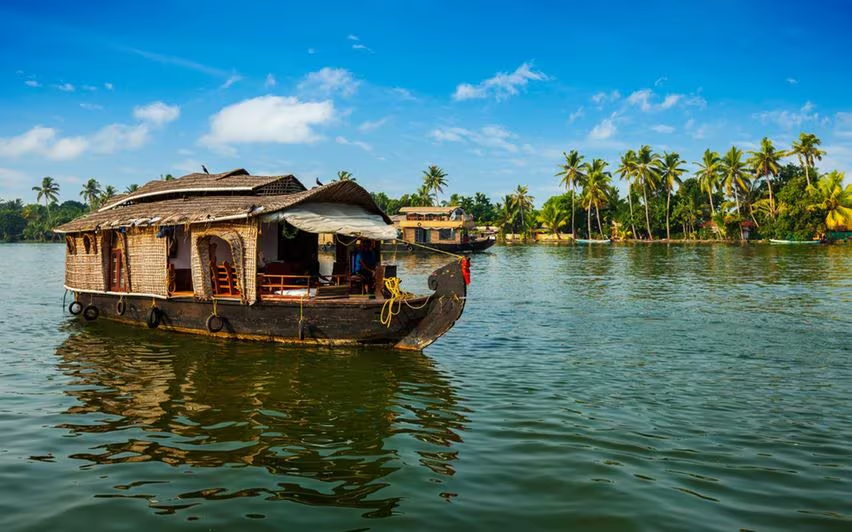Karnataka is home to some of India’s most magnificent wildlife sanctuaries and national parks, making it a true wildlife paradise for nature lovers and adventure seekers. With lush forests, diverse ecosystems, and a rich variety of flora and fauna, Karnataka offers a rare chance to experience the wild in its purest form.
A Wildlife Paradise in the Wilds of Karnataka: Explore the Untamed Beauty of Nature
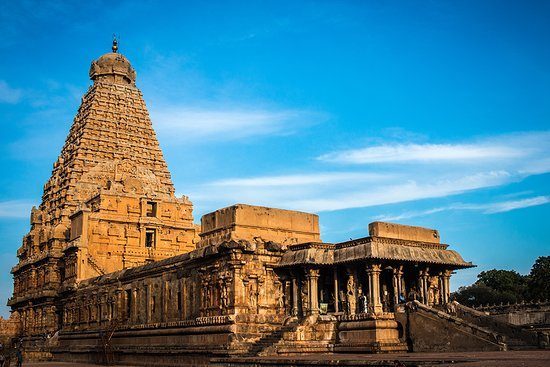
Free Download
lcome to my comprehensive guide to the best travel gear! As an avid traveler, I've curated the ultimate packing list to ensure you have everything you need for your adventures.Bandipur National Park

Nestled in the heart of the Western Ghats, Bandipur National Park is one of India’s most renowned tiger reserves and a vital part of the Nilgiri Biosphere Reserve. Located in the southern part of Karnataka, this vast park is bordered by Nagarhole National Park to the west and Mudumalai in Tamil Nadu to the south, making it a key component of the larger interconnected forested area that forms one of India’s most biodiverse regions. The park is a haven for nature lovers and wildlife enthusiasts, offering a rich tapestry of forests, grasslands, and waterholes, all teeming with an impressive variety of wildlife. Its proximity to the Kabini River adds to its allure, providing critical water resources for the abundant wildlife that calls this sanctuary home.
Flora and Fauna: Bandipur National Park is home to an incredible diversity of wildlife, including some of India’s most iconic species. It is especially famous for its population of royal Bengal tigers, and visitors often spot these elusive predators during jeep safaris. The park also has a large population of Indian elephants, and sightings of elephant herds are a common and awe-inspiring experience. Besides tigers and elephants, Bandipur is home to several other mammals, including leopards, sloth bears, gaurs, chital, and sambar deer. The sanctuary is a birdwatcher’s paradise as well, with over 200 species of birds, including hornbills, eagles, and kingfishers. The flora of Bandipur is equally impressive, with a variety of sal trees, teak, and bamboo, making the park’s dense forests and open grasslands a perfect backdrop for animal sightings.
Activities and Safari Experiences: Bandipur National Park offers a range of thrilling experiences for visitors seeking to immerse themselves in the wilderness. Jeep safaris are the most popular activity, taking visitors on guided tours through the dense forests, where they can spot a range of wildlife in their natural habitat. The safaris are conducted at both dawn and dusk, when wildlife is most active, and the chances of seeing a tiger or a leopard are higher. For those seeking a more tranquil experience, the park also offers nature walks, which allow visitors to explore the forest’s beauty on foot, guided by naturalists who provide fascinating insights into the local ecosystem. In addition, birdwatching enthusiasts can enjoy a peaceful day spotting a wide variety of resident and migratory birds. Bandipur also offers opportunities for night safaris, providing a chance to see nocturnal animals like civets, hyenas, and foxes as they roam the park after dark. Whether it’s a thrilling tiger sighting or a peaceful nature walk, Bandipur provides an immersive experience that showcases the untouched beauty of India’s wilderness.
Nagarhole National Park
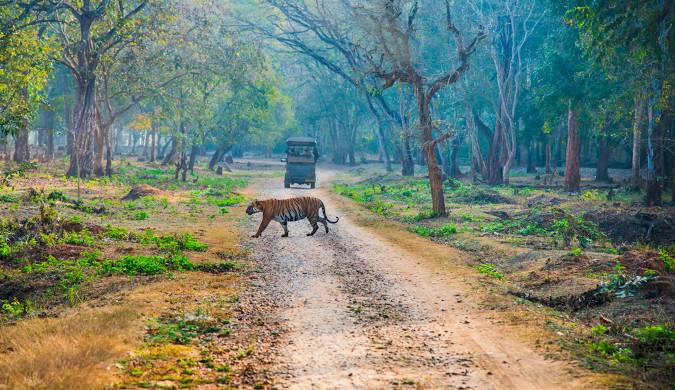
Location and Overview:
Situated in the southern part of Karnataka, Nagarhole National Park (also known as Rajiv Gandhi National Park) is a stunning wildlife sanctuary that lies on the borders of Coorg and Mysore districts. Part of the Nilgiri Biosphere Reserve, Nagarhole is renowned for its rich biodiversity and is a significant part of the Nagarhole-Kabini-Kudremukh wildlife corridor, which allows animals to roam freely between different protected areas. Covering over 600 square kilometers, the park is blessed with a wide range of landscapes, from dense forests and riverine habitats to grassy meadows, making it an ideal sanctuary for wildlife. The park is named after the Nagarhole River, which meanders through its expanse, providing a crucial water source for the animals that live within its borders.
Flora and Fauna:
Nagarhole is a biodiversity hotspot, home to a rich variety of flora and fauna. The park is especially known for its population of royal Bengal tigers, Indian elephants, and leopards, making it a prime location for tiger safaris. The forest is a blend of tropical dry deciduous and moist deciduous types, with the dominant tree species being teak, sandalwood, and rosewood. In addition to tigers and elephants, Nagarhole is home to a number of other species such as gaurs, sloth bears, chital, sambar, and the Indian wild dog (dhole). The park also boasts an impressive avian population, with over 250 species of birds, including hornbills, kingfishers, eagles, and herons. Its riverine ecosystem supports crocodiles and waterfowl, while the dense forests are teeming with a variety of reptiles and amphibians. Nagarhole’s rich ecosystem makes it one of the most biodiverse parks in the Western Ghats region.
Activities and Wildlife Experiences:
Nagarhole offers several thrilling ways to experience its wild beauty. Jeep safaris are the most popular way to explore the park, taking visitors deep into the forest where they can spot tigers, elephants, and other wildlife. These safaris are typically conducted in the early morning or late afternoon, offering the best chances for sightings. The park’s river safaris along the Kabini River are equally thrilling, providing visitors the opportunity to view wildlife such as elephants, crocodiles, and various bird species from the comfort of a boat. Birdwatching is another popular activity in Nagarhole, with its diverse avian life attracting birdwatchers from around the world. The park also offers nature treks and photography tours, guided by expert naturalists, which allow visitors to delve deeper into the intricate ecosystems of the park. For those seeking a more relaxed experience, staying in one of the eco-lodges near the park’s entrance or along the river provides the perfect opportunity to connect with nature while being surrounded by its beauty. Whether it’s the chance to spot a tiger, photograph a bird in flight, or simply enjoy the serenity of the forest, Nagarhole provides an unforgettable wildlife experience for nature enthusiasts.
Coorg Wildlife Sanctuary
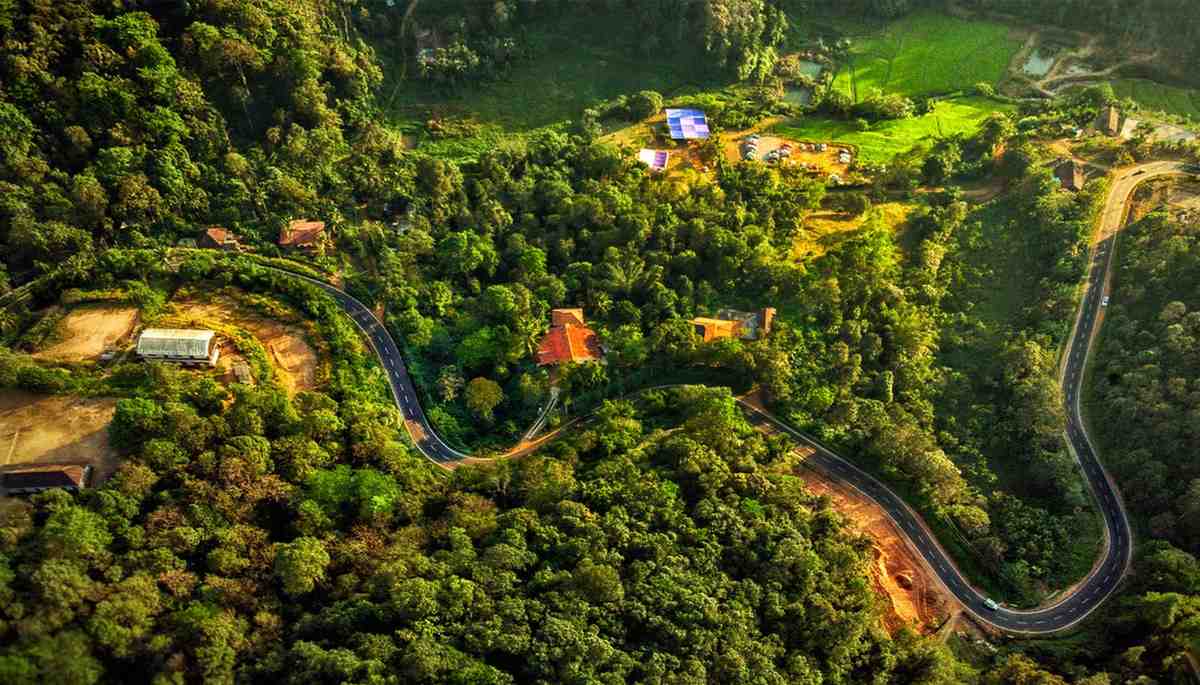
Location and Overview:
Nestled in the picturesque district of Coorg (also known as Kodagu) in southern Karnataka, the Coorg Wildlife Sanctuary is a pristine natural paradise that offers visitors a rare glimpse into the region’s rich biodiversity. Spread across approximately 1,000 square kilometers, this sanctuary is part of the Western Ghats, which is a UNESCO World Heritage Site due to its high levels of endemism and ecological importance. The sanctuary, which is also known as Pushpagiri Wildlife Sanctuary, is characterized by its undulating hills, dense forests, flowing rivers, and verdant coffee plantations. It is an ideal destination for nature lovers, trekkers, and wildlife enthusiasts looking to experience Coorg’s enchanting wilderness away from the hustle and bustle of city life.
Flora and Fauna:
The Coorg Wildlife Sanctuary is a treasure trove of wildlife, featuring an array of endemic and migratory species. It is home to the Indian elephant, tigers, leopards, and wild boars, making it an exciting location for wildlife safaris. The sanctuary also provides refuge to smaller mammals such as langurs, macaques, and sloth bears. A notable feature of Coorg is the presence of a significant number of Malabar giant squirrels, which are often spotted in the treetops, and the elusive Indian wild dog (dhole), which roams the forest in packs. Birdwatchers are also in for a treat, as the sanctuary is home to over 300 species of birds, including hornbills, woodpeckers, eagles, and kingfishers. The dense forests are primarily composed of tropical evergreen trees, shola grasslands, and bamboo groves, making the sanctuary’s landscape both varied and beautiful.
Activities and Wildlife Experiences:
The Coorg Wildlife Sanctuary is ideal for a variety of outdoor activities, most notably trekking and wildlife safaris. The sanctuary offers a range of trekking trails that lead visitors through its diverse ecosystems, where one can observe the forest’s flora and fauna up close. Some of the popular treks include routes to Pushpagiri Peak and Kakkabe, both offering panoramic views of the sanctuary’s verdant landscape. These treks also present opportunities to spot a variety of wildlife, from gibbons and bison to a wide variety of bird species. Wildlife safaris, typically conducted in jeeps or on foot with a trained guide, provide an up-close encounter with the park’s residents, especially elephants, deer, and other mammals. For bird enthusiasts, the sanctuary offers excellent opportunities to spot a range of migratory and resident birds, making it a favorite spot for avid birdwatchers. If you’re looking for a more relaxed experience, spending time in one of the eco-friendly homestays or resorts in Coorg allows you to experience the natural beauty of the sanctuary while enjoying comfort and warmth. Whether trekking through the jungle or simply sitting back and enjoying the sounds of nature, Coorg Wildlife Sanctuary offers an immersive wildlife experience for every visitor.
Rajiv Gandhi (Ranganathittu) Bird Sanctuary
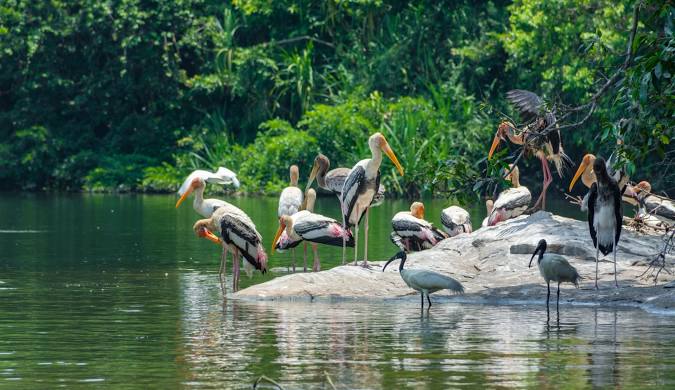
Location and Overview:
Nestled along the Kaveri River near Mysore, Rajiv Gandhi Bird Sanctuary (commonly known as Ranganathittu Bird Sanctuary) is one of the most significant bird sanctuaries in southern India. Spanning about 40 acres, the sanctuary is located in the heart of the Mysore district, surrounded by lush greenery and picturesque landscapes. The sanctuary is named after the famous Ranganathittu village, which lies on the banks of the Kaveri River, providing the perfect setting for birdlife to thrive. With its tropical climate and abundant water resources, Ranganathittu has become an ideal breeding ground for a wide range of birds, both resident and migratory. The sanctuary’s strategic location on the river also provides a peaceful retreat for birdwatchers and photographers alike, making it a popular destination for nature lovers.
Flora and Fauna:
Ranganathittu Bird Sanctuary is home to a staggering variety of bird species, with over 170 species recorded, including a mix of resident and migratory birds. The sanctuary is most famous for its population of migratory birds that arrive during the winter months from countries such as Russia and Central Asia. Among the most notable species are the painted storks, white ibis, egrets, cormorants, kingfishers, and herons. The lush riverine environment, dotted with small islands, serves as an ideal habitat for waterfowl and shorebirds. Apart from birds, the sanctuary is also home to a variety of other wildlife, including crocodiles, which bask on the riverbanks, and a variety of reptiles and mammals. The flora of Ranganathittu consists mostly of tropical trees and shrubs, including the bamboo and mangrove species, which provide shelter and nesting sites for many of the birds.
Activities and Wildlife Experiences:
The boat ride is perhaps the most popular activity at Ranganathittu, providing visitors with a unique opportunity to view the birds up close in their natural habitat. The boat rides along the Kaveri River offer a peaceful and intimate experience, where visitors can silently glide through the waters, witnessing the birds in flight, perched on the trees, or nesting on the river’s small islands. The boat guides are well-versed in the local wildlife, offering insightful commentary and helping visitors spot the various species. For birdwatchers, the sanctuary is a paradise, particularly in the early mornings when the birds are most active. The sanctuary also has several watchtowers and viewing platforms that allow visitors to observe the birds from a distance without disturbing them. Photography is another popular activity, with the scenic views and vibrant birdlife providing countless opportunities for stunning shots. The best time to visit Ranganathittu is from November to June, when the migratory birds are present. Whether you’re a birdwatching enthusiast or a casual visitor, Ranganathittu Bird Sanctuary offers an unforgettable experience of India’s avian diversity.
Kabini Wildlife Sanctuary
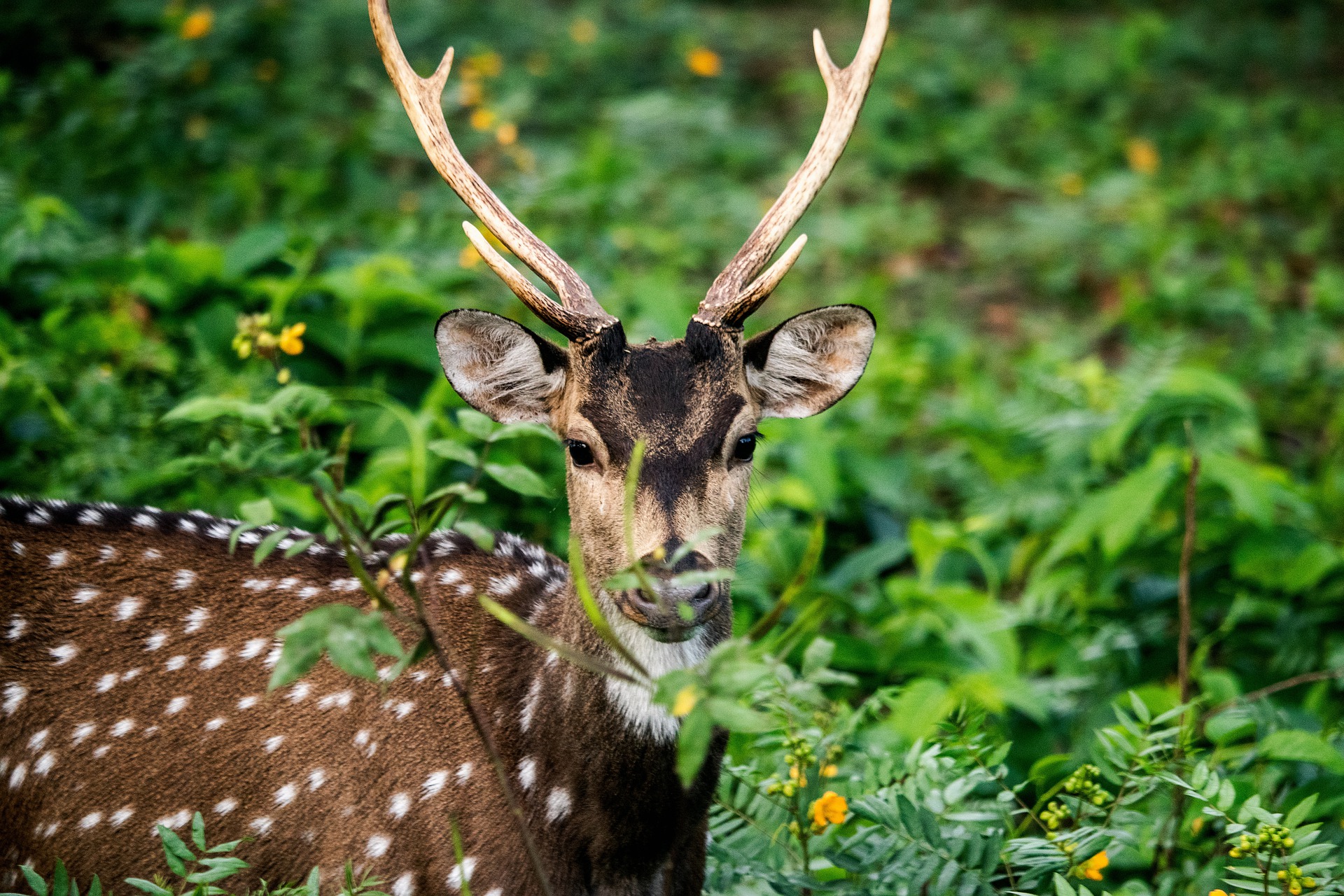
Location and Overview:
Nestled along the Kabini River in southern Karnataka, the Kabini Wildlife Sanctuary is a part of the larger Nagarhole National Park, making it one of India’s most significant wildlife reserves. Located near the town of Sultan Bathery, Kabini is famous for its lush landscapes, scenic river views, and diverse wildlife. The sanctuary is spread across an area of approximately 550 square kilometers, offering a tranquil environment where visitors can immerse themselves in the beauty of nature. Known for its vast grasslands, dense forests, and serene water bodies, Kabini is a popular destination for wildlife enthusiasts and photographers seeking a unique blend of adventure and serenity. The river, which flows through the sanctuary, plays a crucial role in sustaining the local ecosystem, attracting various species of animals and birds.
Flora and Fauna:
Kabini Wildlife Sanctuary is home to a remarkable diversity of flora and fauna, making it one of the best places in India to spot elephants in the wild. The sanctuary has a healthy population of Indian elephants, and visitors can often witness large herds coming to the river to drink or bathe. Kabini is also renowned for its royal Bengal tigers, with sightings being a prized experience for wildlife lovers. In addition to tigers and elephants, the sanctuary is home to other iconic species like leopards, gaurs (Indian bison), sloth bears, and wild boars. The forests of Kabini also support a wide range of herbivores such as chital (spotted deer), sambar, and barking deer. Birdwatchers will be delighted by the rich avian diversity, with over 300 species of birds, including Indian roller, hornbills, kingfishers, and eagles. The flora of Kabini includes a mix of tropical deciduous trees, teak, sandalwood, and bamboo, which provide abundant cover and shelter for wildlife.
Activities and Wildlife Experiences:
Kabini offers a variety of activities that allow visitors to connect with nature in different ways. Jeep safaris are the most popular activity in the sanctuary, offering a thrilling adventure through its forests and grasslands. These safaris, typically scheduled at dawn or dusk, provide the best opportunity to spot wildlife in their natural habitat, with frequent sightings of elephants, leopards, and even tigers. For a unique experience, the boat safaris along the Kabini River allow visitors to see wildlife from a different perspective. The boat rides are especially popular for spotting elephants, crocodiles, and various waterfowl that gather near the riverbanks. The sanctuary also offers nature walks and birdwatching tours, where trained naturalists guide visitors through the jungle, pointing out various species of plants, animals, and birds. Whether you’re looking for a thrilling safari experience or a peaceful boat ride on the river, Kabini provides an unforgettable wildlife experience. With its abundant wildlife, serene atmosphere, and stunning landscapes, Kabini is an ideal destination for nature lovers, wildlife photographers, and those seeking an escape into the wild.

